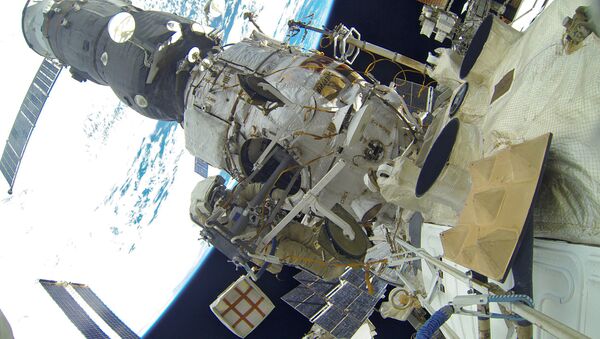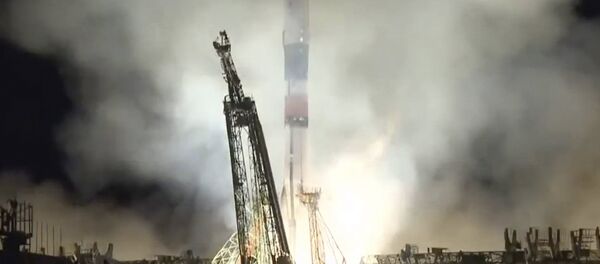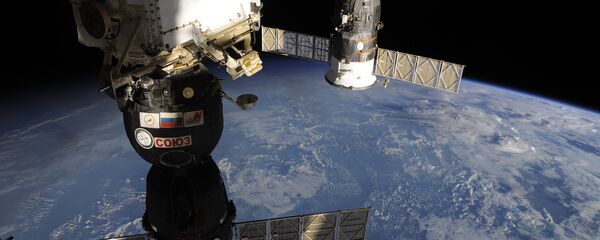The new scientific and energy modules set to be attached to the Russian segment of the ISS will receive domestically-engineered body armour fabric-based anti-meteorite protection, according to Space Engineering & Technology, the official journal of Russia's Energia rocket and space corporation.
"The basalt and body armour fabrics from which the structure of the buffer shield is based are comparable in terms of their properties to the Nextel and Kevlar fabrics used in the shielding on NASA modules," the article, written by the material's developers, noted.
Russia is expected to build the Orbital Piloted Assembly and Experiment Complex (Russian acronym OPSEK), a low Earth orbit space station sometime in the 2020s. The station will use Russian-made components from the ISS which are expected to be removed when the international station ends its operations in the mid-2020s. In addition to carrying out the functions of a traditional space station, the OPSEK is envisioned as a staging area for the assembly of components for manned spacecraft carrying out missions to the Moon, Mars, and other planets.
Last week, India successfully tested a new anti-satellite weapon, destroying a Microsat-R satellite in low-Earth orbit. The test has led to international criticism about the use of weapons in space, and caused concerns regarding the operation of the ISS, with the leftover fragments of the satellite and missile posing a threat, albeit "a highly unlikely one," to the station's operations, according to Russian space experts.



